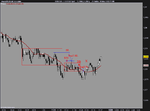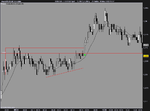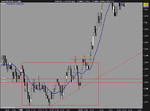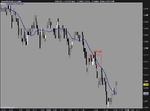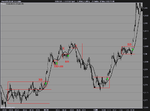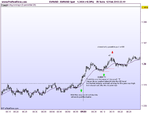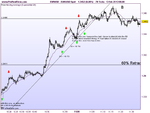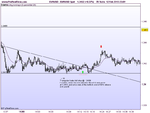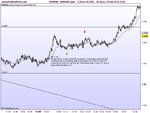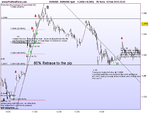Buy the book. It's called 'Forex Price Action Scalping'. The author is Bob Volman. Read it. Take notes. Read it again. Open a demo account and trade. Once you get a good feel for the system and are getting some decent results start trading live, and gradually increase your size as your results and confidence improve.
The only thing new in the book was tick charts which was worth the money for me , to me everything else in the book is reinvent the wheel.I don't use what he suggested , but use 200 tick charts.Same old stuff here like scalp with trends , trailing stops and box breakouts in ranging markets.He talks about probabilities and edge , yet many of box/range breakout set ups , in ranging markets , have no better than 50/50 chance of success less spread .The author has his own definition of edge ,it is based on trader's ability to read the markets .It would seem to me , to be a discretionary method , one that can not be used by everybody as per textbook.The range breakout strategies are the same old box/range breakout technical analysis strategies rehashed and all this stuff is available for free on the internet.
A professional trader would look more for support and resistance , and filter out randomness and set ups in fx random transactions which appear to be valid set ups according to the range break set ups. the book is short on these aspects and barely covers support and resistance .and there is no confidence to put on live trades , based on the ranging breakouts.The book in my opinion , falls short to deliver a high probability scalping method in a few words.Breaks of 1 pip in random transactions or volatility increases and noise only exist in real markets , but not in text books.
The author makes a lot of claims , but does not verify any of them with any statistics or study results.There is no probability data on the success/failure rate of each of his set ups , there are no historical results of actual live performance of his set ups.There are a lot of tease breaks and false breaks , but without knowing the probabilities of success/failure , one can not use the methods for live trading.
This book is well written in easily absorb able literature , but the important thing is the content , and if it can be applied practically by someone else for live trading .Practicing his methods can help some to learn trading in the lower time frames but it can also become a detriment to a trader , if many set ups fail due to randomness and market conditions , for a prolonged period of time.Can all the content be applied profitably ?. I very much doubt it .I read a load of dubious set ups , many things he suggests , I would do the opposite in live trading , many traders look for the failure of set ups to trade against.One of his set ups ARB , acknowledges the failures of the other range break set ups , and is intended to be used when they fail.Similar methods are used by amateurs on forex forums , there is nothing to suggest a superior method of trading ,in my opinion.
Many professional scalpers like to trade the opposite to the range breakouts , due to the high failure rates of range breakout trading.They prefer to sell at the top of the range and buy at the bottom of ranges , i.e selling at resistance and buying at support.Ranges in the fx charts come in different shapes like channels and diagnol trend lines , this book barely touches it.
Money in the gold rush was made by selling picks and shovels , in the trading industry gold rush it is made by selling books ,seminars , education ,software and signals .The trading industry is full of rogues .
Any decent professional of Guru status , would easily become a billionaire from trading and scalping , they would not have time to write a book.Just do a google search of compounding billionaires , you will see what I mean. The only evidence we have is Bob Volman make money from writing books on Amazon.


